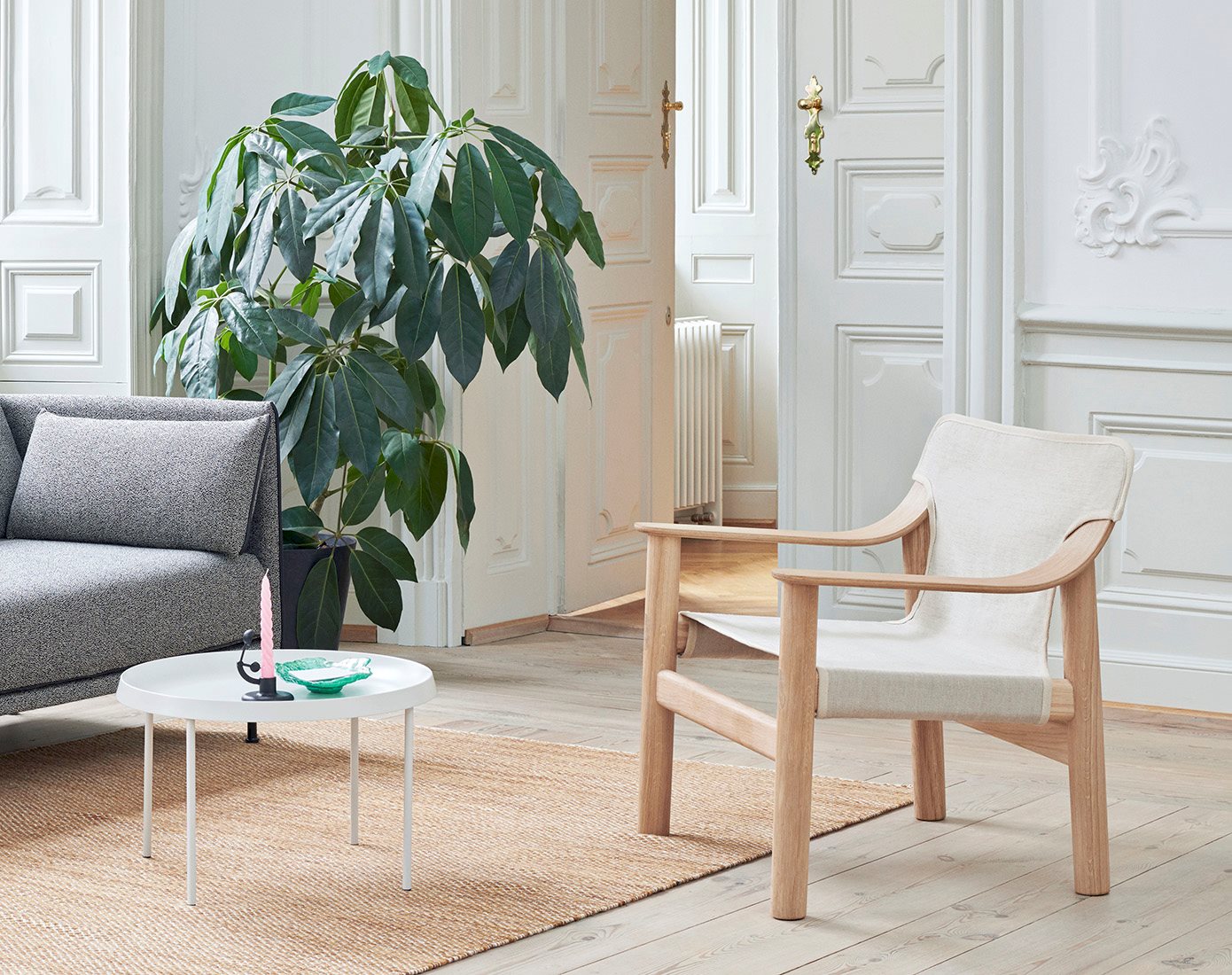BERNARD: AN EASY CHAIR FOR CONTEMPORARY LIVING
An easy chair is a welcome addition to any space, from a bedroom to a living room to an office. With Bernard, designer Shane Schneck wanted to preserve the typology’s defining characteristic – easy, durable comfort -- while creating a sustainable, affordable design classic with a modern appeal.
Bernard has a solid feel but a graceful expression, as it combines a solid oak or beech frame with a light slip-on cover that is available in either leather or industrial-strength marine canvas. The cover is removable, so it can be taken off for cleaning or maintenance: Bernard can thereby last through a lifetime of use, or even be passed down through generations.
We spoke with the designer to learn about his design process, and to understand what it is that makes Bernard a standout addition to the easy-chair genre.

What was your inspiration for Bernard, in terms of its aesthetic and material construction?
Shane Schneck: Our objective was to make a very generous and comfortable chair with an arm large enough to park a cup of coffee on. And to create a product that could be renewed and used for generations. The frame is solid oak with plywood arms that roll upwards to support the canvas, emphasizing their role in the structure.
How did your design process start, and how does the collaboration with HAY work go for you?
Shane Schneck: It’s organic. Most of the time we come up with an idea we think Rolf or Mette may enjoy, but this time Rolf came to us with a request to make an easy chair. We spotted the opportunity to make something that was not upholstered in the hope to make the chair a bit more economic and something unique in the HAY assortment. When Rolf arrived, we presented full-sized paper models, and he asked that we reserve all the ideas. I think working with HAY is unique in that results are so immediate, and they are always willing to try something new.

One of the earliest Bernard prototypes


What would you say distinguishes Bernard, sets it apart from other chairs of its typology?
Shane Schneck: There are many canvas easy chairs out there. So it was crucial for us to find a new way connect the canvas to the frame and arms – and that has actually become Bernard’s defining feature. Our desire to make the attachments between the frame and canvas almost hidden and removable made for a lot of work. The challenge was to create a cordless expression underneath the seat that led to a corset-fastening solution. Both the canvas and leather can be tightened after years of wear and tear, or removed for occasional maintenance.
How does Bernard fit in with the rest of your design work?
Shane Schneck: Our ambition is always to make something that people find useful and to create an expression that hopefully will hold value for future generations. I feel this is more important than ever as our homes have become our refuge in times of crisis. I think the future of design, and a world in which we all strive to own “less, but better,” has arrived. And that’s a good thing, because our planet depends on it.















